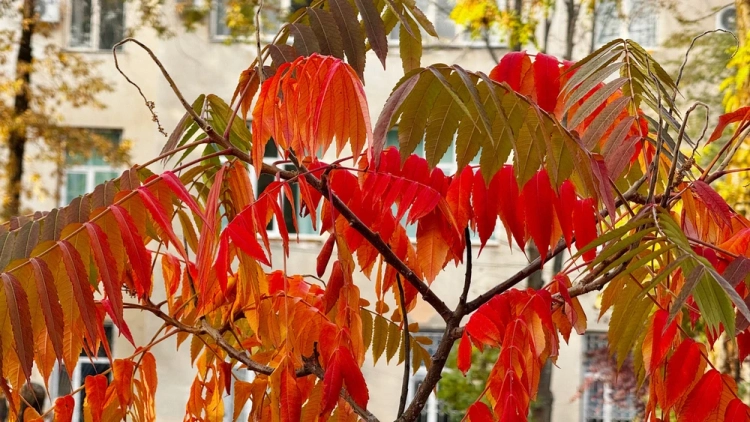
The Osh Region was established on November 21, 1939, replacing the former district. After numerous...

Batken is a city in Kyrgyzstan, the administrative center of Batken Region and District. The...

The Chuy Region was established on December 14, 1990. Until 1939, various...

The Naryn Region is located in the southeast of Kyrgyzstan and was first established on November...

Isfará — a river of the Syr Darya basin The river basin encompasses the Isfara and Kanibadam...
Weather forecast for Kyrgyzstan on October 22. According to information from Kyrgyzhydromet, no...

Sulyukta is a city of regional subordination in the Batken region of Kyrgyzstan. Population (2009)...

The Jalal-Abad Region was established on November 21, 1939. From January 27, 1959, it became part...
Weather forecast for Kyrgyzstan on October 21. According to Kyrgyzhydromet, no precipitation is...

The Kyrgyz Republic is a mountainous country (average altitude 2750 m above sea level), located in...

The city of Nookat is located in Kyrgyzstan and is the center of the eponymous district of the Osh...
The weather in Kyrgyzstan on October 23. According to the data from Kyrgyzhydromet, rain is...
Weather conditions in Kyrgyzstan on October 24. According to data from Kyrgyzhydromet, clear...

The territory of the Osh region occupies the southwestern part of Kyrgyzstan. Its area is 75.5...

Have you ever, in a short span of time measured in hours, visited a hot valley, tasted sweet...

Administrative-territorial division of the Kyrgyz SSR as of January 1, 1972....

Territory, Geography, and Administrative Division of the Kyrgyz Republic The Kyrgyz Republic...

Kyzyl-Kiya is a city of regional subordination in the Batken region of Kyrgyzstan. Population...

Juicy Kyrgyz Language and Purple Mosque Traveling through Kyrgyzstan is essential to understand...

The Talas Region is located in the northwestern part of the Kyrgyz Republic. It was established on...

The Issyk-Kul Region is located in the eastern part of Kyrgyzstan. It was established on November...

Rashid ad-Din on the "Kyrgyz Tribe" According to Rashid ad-Din's information about...

Uch-Korgon – a large village (kishlak) in the northeast of the Batken region. The word...

Over the years of independence, the processes of social development in the country have...

Kara-Kulja Village is the center of the eponymous district Karakulja (archaic: Kara-Kulja; at the...

At the same time, rain is expected in the west and northwest of the country, caused by the...
In the Batken region, in the village of Austan, a section of road has been preserved that was built...

Aydarken – a small town and industrial center in the central part of the Batken region. The...

The formation of runoff and the hydrographic network in the territory of Kyrgyzstan is greatly...

BAZARKORGON AND BAZARKORGON DISTRICT Bazarkorgon (Kyrgyz: Базар-Коргон) is a village in the...

The village and district center of Suzak is located at the foot of a low mountain range on the...

The territory of Kyrgyzstan is predominantly mountainous, with peaks almost everywhere reaching...

The Fergana Valley is popularly known as the "pearl" due to its rich oasis. The Fergana...

Archa-Bashi Glacier on the Alai Range The Archa-Bashi Glacier is large and dendritic, located at...

Turkestan Range A high mountain range oriented in a latitudinal direction, approximately 340 km...

During the period under consideration, the Kyrgyz population occupied approximately the same part...

The Chatyr-Kel Zone includes a significantly elevated intermountain basin with a lake of the same...

Osh Passes Taldyk Pass - a pass in the Alai Range, oriented from north to south, connects the...

River Tributaries The existence of powerful glacial nodes, large areas occupied by snowfields, and...

There are 100 tourist sites in the Batken region. This was stated today by the plenipotentiary...
Osh - "The Southern Capital" of Kyrgyzstan. The city of Osh is the administrative center...

Clear weather without rain is expected in Kyrgyzstan. In the capital, Bishkek, the temperature at...

The State Nature Reserve "Surma-Tash" inspires with its beauty and uniqueness. The...

Categories of Protected Natural Areas in Kyrgyzstan Kyrgyzstan has established 83 special...

Zailiyskiy Alatau A mountain range in the northwest of the Tian Shan (on the border of Kazakhstan...

What will the weather be like in Kyrgyzstan in October? It is expected that the month will be...

Kainy Between Kokshaal-Tau and Kainy-Katta lies the powerful Kuyakap Glacier, and between...

The "Kyzyl-Unkyur" Zone is located 15 km northeast of the village of Arslanbap in the...